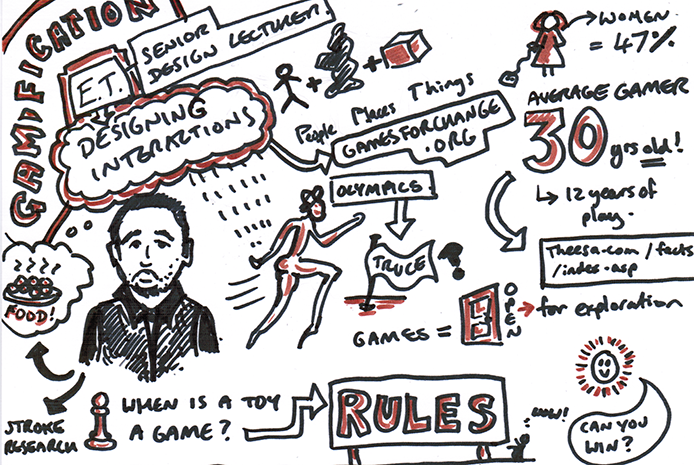A job or two ago, I was involved in a period of flux in the company I worked for. You see, they had been piloting Agile development as a way of bringing new interactive educational products to life, and as a result there was some shuffling of people to be done.
The first move, was to bring the User Centred Design team into the same room as the designers to foster relations. This upset the UCD team who said whilst it was important to hang out with the designers, and thus be able to participate in the now legendary Beer Friday, they also thought it was important to be able to sit with the developers.
The company then decided that every print designer in the company must become UX. Or rather, User Experience designers. This was rather premature, given that some of them remembered printing presses and lead type and hadn’t the foggiest about designing or testing a user interface. The entire team was rebranded…
… and then carried on as before. Except for one valuable thing – they were moved to sit in teams based on product, rather than specialization. They were assigned a Product Owner. Productivity went up, iterations were faster, problems were solved, communication was improved! And we all got a thorough grounding in what it meant to be Agile.
And one of the topics we were asked to be proficient in was sketching. Why? Because sketching is a great way to make a low fidelity prototype (I don’t make this stuff up, honest). And not only sketching, but storyboarding too. There was very much a focus on speed, efficiency and communication – and a picture CAN explain a thousand words – especially if it is a good one. Sketching out ideas is also collaborative – the designer can take direction from the other team members and put together an overview of the process and products. I know a UX designer who uses programs like Axure and Balsamiq and even Fireworks – but what she find most productive is the sketching aspect – it opens up conversations with other team members (and sometimes strangers in coffee shops – everyone loves an artist).
Ok so that’s drawing covered – but webcomics? Comics even?
So I did a little digging and found that webcomics (depending on your definition) ARE used for agile processes in UCD. Webb (2012) did some testing on users during user testing, and found that the digital comics-based instructions were better received and improved understanding. There is work by Haesen et al. (2010) extolling the virtues of the comics narrative in UX. There are also webcomics about UCD like OkCancel. It is inevitable that this methodology will find its feet in the realm of user experience and grow – perhaps there might be an open source collection of user stories webcomics? UX webcomics awards… Well I can dream.
Regardless, it seems as though webcomics could be an important part of the Agile process, helping communicate ideas between different disciplines in house but also if you work in distributed teams. Posting your sketches and comics narrative online on collaborative forums is immensely helpful: at-a-glance information. There are also general arguments for using visuals whilst working remotely – sometimes a concept is better explained in a storyboard if your user or collaborator doesn’t have the same first language as you.
In an aside – Sketchnoting has a rather comics style theme to it, it’s like taking notes, except with pictures. You end up with a story of the meeting or talk or process that is easy to understand, remember and utilize when you are framing your storyboards. You can also use comics when creating personas – like Dr Makayla Lewis (also an accomplished sketchnoter). There are many examples uploaded to the web by both Dr Lewis, and many, many other designers and researchers. I wish my academic texts were written in sketchnote… Or as webcomics. There’s nothing better than getting confused about a difficult concept (What is the Heartbleed bug?) then finding out XKCD has it covered.
As Web 2.0 progresses into Web 3.0 (I’m not ready!) I’m sure that webcomics will also progress and embrace the changes that are sure to come. By then, there’ll be webcomics for telling you how to build an Ikea wardrobe, webcomics to tell you which diseases you have, webcomics as their own design development process?
